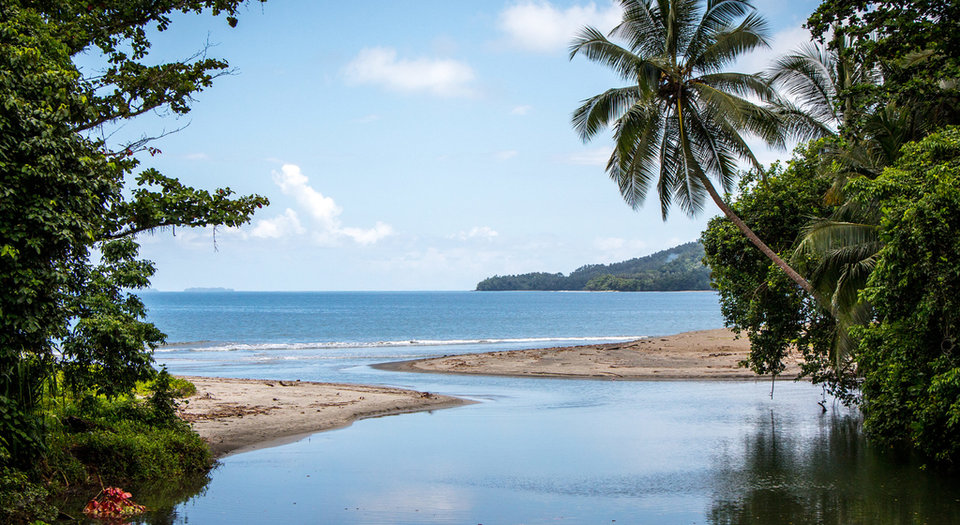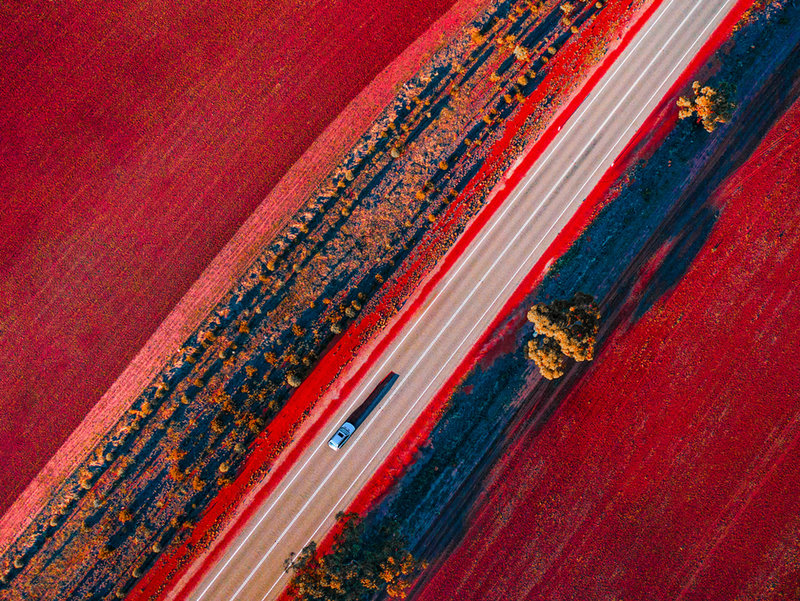
PROJECTS
Return to Panguna
Rio Tinto has committed to a multi-million dollar independent assessment of its former copper and gold mine in Panguna, which was the flashpoint for Bougainville’s decade-long civil war. Scarlett Evans dives into the history of the mine, the damage done, and whether Rio's first steps towards reparation could set a precedent for the broader impacts of energy colonialism.
T
he Panguna mine’s history is long and chequered. Developed in the 1960s when Papua New Guinea (PNG) was still an Australian colony, it became one of the world’s largest gold and copper mines of its time. Yet disputes over uneven distribution of the site’s spoils and environmental degradation caused by its operations led to a landowner rebellion that spiralled into civil war, and owner Rio Tinto retreated.
Panguna was abandoned and the mining major has never made any moves to rehabilitate the land or rectify the social and environmental devastation left in its wake, handing over its shares of the site to Bougainville and PNG Governments in 2016.
Now, Rio is returning to the site, and all eyes are on the miner to see if legitimate action will be taken to repair the land and, by proxy, the relationship with Bougainville. While its commitment to an assessment is a step in the right direction, it is not in itself a reason to celebrate. Without legal obligations to turn observations of damage into tangible reparations, fears remain that the miner may still get away without paying its due diligence.
Rio’s return
The upcoming assessment marks the first time in 32 years that Rio Tinto has made any moves to address calls for accountability over Panguna’s impacts. The new commitment follows a complaint lodged in September 2020 on behalf of 156 residents of Dapera, Enamira, Java, Kobalu 1, and other villages downstream of the mine in Bougainville.
The residents, represented by the Human Rights Law Centre, allege that tailings and rock waste from the mine continue to wreak havoc on local land and river systems, with the waste material stretching almost 40km downstream to the coast.
We’re looking at the dumping of somewhere in the order of 20-30 million tonnes of tailings down the river every year.
“We’re looking at the dumping of somewhere in the order of 20-30 million tonnes of tailings down the river every year,” says Dr Gavin Mudd, a professor of environmental engineering at RMIT University. “Often, that's not accounting for the mine-contaminated water either. You don't have to have chemically toxic characteristics of tailings to make tailings problematic, just the sediment load itself can be a huge issue – but at Panguna, they are chemically toxic and massive loads.”
Such is the severity of the damage that Panguna – in addition to the Ok Tedi mine – is credited as forcing the industry to assess its social license to operate, and dredge up questions about what due diligence looks like from miners who have left devastation in their path.

// 3D System Model and Completed Installation. Credit: Deimos
An important first step
In a statement, Rio Tinto chief executive Jakob Stausholm labelled the assessment “an important first step”, and indeed, many await to see whether it will open the door to genuine rehabilitation. Associate professor Nick Bainton at the Centre for Social Responsibility in Mining says that while the report is a good start, it’s not in itself an indication of industry change.
“In one sense it’s not necessarily novel or precedent setting – as there are a lot of examples globally of privately funded public inquiries, and the jury is still out as to whether these sorts of inquiries lead to industry change,” he says.
“But what is novel here is the fact that this inquiry is occurring after Rio Tinto has transferred its majority shareholding in Bougainville Copper Limited [BCL operated the Panguna mine as a Rio Tinto subsidiary] to the PNG Government and the Autonomous Bougainville Government.”
The jury is still out as to whether these sorts of inquiries lead to industry change.
“In some respects, this case will signal to the industry that companies cannot easily walk away from the legacies created by the projects they develop and operate,” he adds.
A new public pressure for sustainability, in addition to the disastrous incident at Juukan Gorge has put a spotlight on Rio’s actions. Yet while the expectation is there, the legal obligation is not, and it’s uncertain whether this could set a precedent for other mining majors.
A new leaf for social responsibility?
According to Bainton, over the last two decades there has been what he calls a "paradoxical trend” in the mining industry’s ESG standards.
“The industry has voluntarily subscribed to an increasing number of CSR [corporate social responsibility] standards (signalling that lessons have been learned), while in practice social and environmental impacts from extraction have proliferated (signalling that these same lessons have been forgotten),” he says. “Juukan Gorge has been the latest wake-up call for the industry. But it remains to be seen whether this leads to meaningful change.”
Demands listed in the recent complaint include commitments from Rio Tinto to: engage with the communities affected by the mines; find solutions to the ongoing environmental and social impacts; and contribute to a “substantial, independently-managed fund” to assist long-term rehabilitation efforts. Given the vast scale of the mine – and of the damages caused – such a project would be no mean feat.
One of the key tests that communities will have is, is this a genuine process?
“One of the key tests that communities will have is, is this a genuine process?” says Mudd. “You can't just take one or two samples to determine the damage, you would need 25 samples from the mine, going right down the creek into the Jaba River and then out into the ocean. So it's a huge project, if you really want to do it well.”
“The roadmap to rehabilitation is not there yet,” he adds. “There is work being done to put together the scope and mechanics of the process, but there are certain things myself and many others will be looking out for – namely a genuine apology, compensation, and site clean up.”

Ensuring reparations
Anthony Regan, a lawyer who worked as an adviser to Bougainville parties during the civil war peace process, says that there are no specific legal measures Bougainvillians can use to ensure reparations. However, he says the public pressure on Rio could help cement change.
“Following the publicity about the Juukan Gorge destruction, Rio is under international pressure to take account of damage that it causes,” he says. “Just by accepting the complaint made by the Panguna area landowners, they are admitting to the possibility of some degree of liability.
“The landowners are seeking, amongst other things, as much restoration as possible of the damage done, particularly by riverine disposal of overburden and tailings. The costs of that alone could be expected to be hundreds of millions of dollars.”
Following the publicity about the Juukan Gorge destruction, Rio is under international pressure to take account of damage that it causes.
This figure, Regan estimates, could escalate into the billions if the miner does commit to reparations after the assessment.
When it comes to social responsibility, the current climate means expectations are rising, and there is optimism Rio’s assessment could be a pivotal moment for paying back the costs of energy colonialism. Yet with issues that run as deep and as personal as that of the Panguna mine, the road to reparation is long, and Rio still has a lot to prove.
